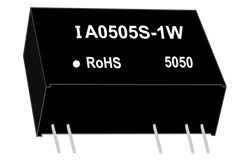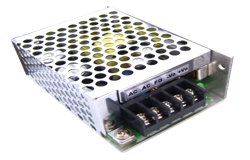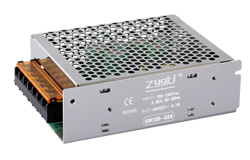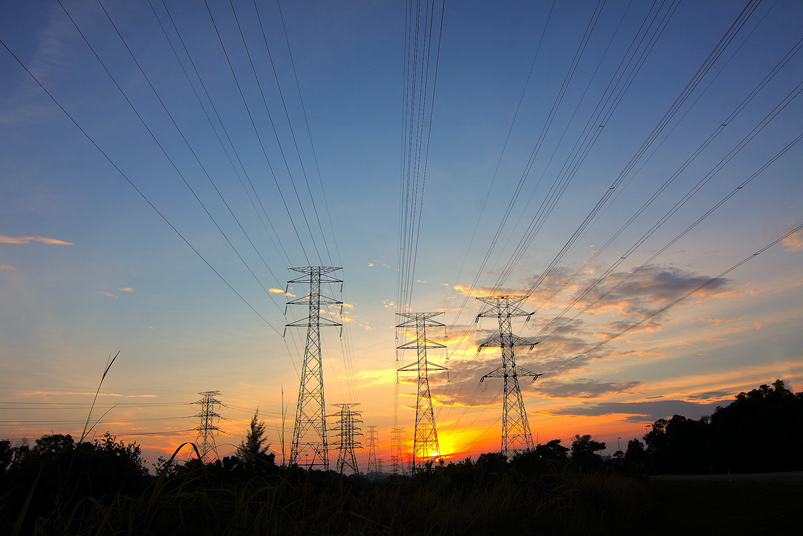消息
Bidirectional DC DC Converter: Principles, Topologies, and Applications
Author: ZYG Power Module Time: 2023-6-24
A bidirectional DC-DC converter is a power electronic device that can transfer electrical energy bidirectionally between two DC voltage levels. It is widely used in various applications, including electric vehicles, renewable energy systems, and battery energy storage systems. This article will explore the principles, topologies, and applications of bidirectional DC-DC converters.
Principles of Bidirectional DC-DC Converter
The main function of a bidirectional DC-DC converter is to transfer power from one DC voltage level to another. The power transfer can be either unidirectional or bidirectional. A bidirectional converter can transfer energy from a high voltage source to a low voltage load and vice versa. Bidirectional DC-DC converters typically consist of two power converters, each with its own power switch and control circuit. One converter operates in the forward direction, transferring energy from the input voltage to the output voltage, while the other converter operates in the reverse direction, transferring energy from the output voltage to the input voltage.
The operation of a bidirectional converter is controlled by a feedback loop that adjusts the duty cycle of the power switches to maintain the desired output voltage level. The duty cycle determines the amount of time the power switch is on during each switching cycle. By adjusting the duty cycle, the output voltage can be regulated to a desired level.
Topologies of Bidirectional DC-DC Converter
There are several topologies of bidirectional DC-DC converters, including full-bridge, half-bridge, and interleaved. Each topology has its advantages and disadvantages, and the choice of topology depends on the specific application requirements.
The full-bridge bidirectional DC-DC converter is a popular topology used in high-power applications. It consists of four power switches arranged in a bridge configuration. In the forward direction, the input voltage is applied across the diagonal of the bridge, while the load is connected across the other diagonal. In the reverse direction, the input and output terminals are swapped, and the converter operates in the opposite direction.
The half-bridge bidirectional DC-DC converter is a simpler topology that uses two power switches. In the forward direction, the input voltage is applied across one switch, while the load is connected across the other switch. In the reverse direction, the input and output terminals are swapped, and the converter operates in the opposite direction.
The interleaved bidirectional DC-DC converter is a more complex topology that uses multiple power converters in parallel. This topology has the advantage of reducing the input and output current ripple and improving the overall efficiency.

Applications of Bidirectional DC-DC Converter
Bidirectional DC-DC converters are widely used in various applications, including electric vehicles, renewable energy systems, and battery energy storage systems. In electric vehicles, bidirectional converters are used to transfer energy between the battery pack and the vehicle\’s electrical system. The converter can charge the battery pack when the vehicle is braking or decelerating, and it can discharge the battery pack to power the vehicle\’s electrical system when accelerating.
In renewable energy systems, bidirectional converters are used to transfer energy between the DC voltage level of the renewable energy source, such as a solar panel or wind turbine, and the DC voltage level of the load or the battery storage system. The converter can also transfer energy from the battery storage system to the load when the renewable energy source is not available.
In battery energy storage systems, bidirectional converters are used to charge and discharge the battery pack. The converter can charge the battery pack when excess energy is available from the grid or a renewable energy source, and it can discharge the battery pack to supply power to the load when needed.
Conclusion
In summary, bidirectional DC-DC converters are important power electronic devices that can transfer energy bidirectionally between two DC voltage levels. They are widely used in various applications, including electric vehicles, renewable energy systems, and battery energy storage systems. The choice of topology depends on the specific application requirements, and the operation of the converter is controlled by a feedback loop that adjusts the duty cycle of the power switches to maintain the desired output voltage level.
以前的: ZP Series AC DC Converter – Efficient Power Conversion Solutions
下一个: Medical Power Series: Empowering Healthcare Professionals and Patients for Better Health
相关信息
-
2023-10-13
Top Modular Power Supplies for Enhanced Gaming Performance
When it comes to gaming, having a powerful and reliable power supply is essential. A modular power supply, in particular, offers numerous benefits for gamers. With its detachable cables, it allows for better cable management, improved airflow, and easier installation. If you are looking to enhance your gaming performance, here are some of the top modular power supplies available on the market today. 1. Corsair RM750x The Corsair RM750x is a popular choice among gamers due to its high efficiency and low noise operation. With 80 Plus Gold certification, it delivers up to 90% energy efficiency, reducing heat and electricity costs. It also features fully modular cables, allowing you to connect only the cables you need for your specific gaming...
查看详情 -
2023-5-14
Converting 110V AC to 12 Volt DC: A Step-by-Step Guide
Converting 110V AC to 12 Volt DC: A Step-by-Step Guide Converting 110V AC to 12 Volt DC is a process that is commonly used in various electronic devices such as radios, televisions, and computers. The process is simple and straightforward, but it requires the use of certain tools and equipment. In this guide, we will take you through the process of converting 110V AC to 12 Volt DC. Step 1: Gather the Required Tools and Equipment To begin with, you will need certain tools and equipment to convert 110V AC to 12 Volt DC. The following are the tools and equipment that you will require: - A transformer - A rectifier - A capacitor - A voltage regulator - A...
查看详情 -
2023-9-13
Highly Efficient and Versatile: 850W Modular Power Supply
With the increasing demand for advanced and power-hungry computer systems and components, the need for a reliable and efficient power supply has become more crucial than ever. The 850W modular power supply stands out as a top choice in the market, offering high efficiency, versatility, and numerous benefits to users. One of the key features of the 850W modular power supply is its exceptional efficiency. With an 80 Plus Gold certification, it is able to deliver up to 90% energy efficiency, resulting in less heat generation and lower electricity bills. This high efficiency also translates to lower maintenance costs in the long run, making it a cost-effective option for both individuals and businesses. The modular design of the power supply...
查看详情 -
2023-11-3
AC Power Supply Module: An Essential Component for Reliable Electrical Systems
Introduction Electricity is the lifeline that powers our day-to-day activities. From powering our homes to running complex industrial systems, a reliable and uninterrupted supply of electricity is crucial. At the heart of this reliability lies the AC power supply module, an essential component that ensures the delivery of stable and regulated power to electrical systems. In this article, we will explore the significance of the AC power supply module and its role in maintaining the efficiency and safety of electrical systems. What is an AC Power Supply Module? An AC power supply module is a device that converts alternating current (AC) to a regulated and stable form of power suitable for powering electrical systems. It acts as an intermediary between...
查看详情 -
2023-6-26
“AC DC Power Supply SD Series”
The AC DC Power Supply SD Series is a vital component for numerous electronic devices and equipment. It is a type of power supply that converts AC or alternating current into DC or direct current. This power supply is widely used in various applications, such as computers, telecommunications, medical equipment, and industrial automation. The AC DC Power Supply SD Series is known for its efficiency and reliability. It has a high power factor that helps reduce energy consumption. With a compact design, it can fit into small spaces and can be easily integrated into different systems. This power supply has a low noise level and excellent stability, ensuring a steady supply of power to the equipment. One of the key...
查看详情 -
2023-4-18
Building a 120 Volt AC Power Supply for 3 Volts DC
Introduction: In this article, we will discuss how to build a 120-volt AC power supply for 3 volts DC. This process requires some basic knowledge of electronics and safety measures. We will provide step-by-step instructions to help guide you through the process. Materials Required: - Transformer (120V to 12V AC) - Bridge rectifier - Capacitor (1000uf, 16V) - Voltage regulator (LM7803) - Heat sink - Wires - Soldering iron and solder - Wire stripper - Pliers - Safety glasses Step 1: Safety Precautions Before starting any electrical project, it is essential to take safety precautions to avoid electrical shocks or fires. Wear safety glasses to protect your eyes from soldering fumes. Ensure that the circuit is unplugged from the power...
查看详情


















